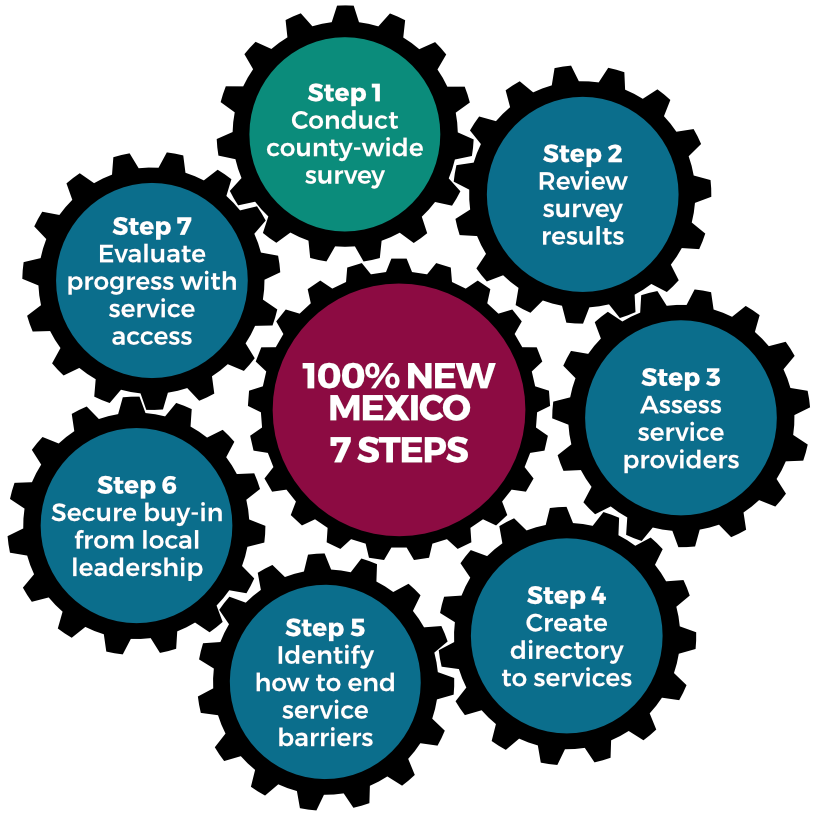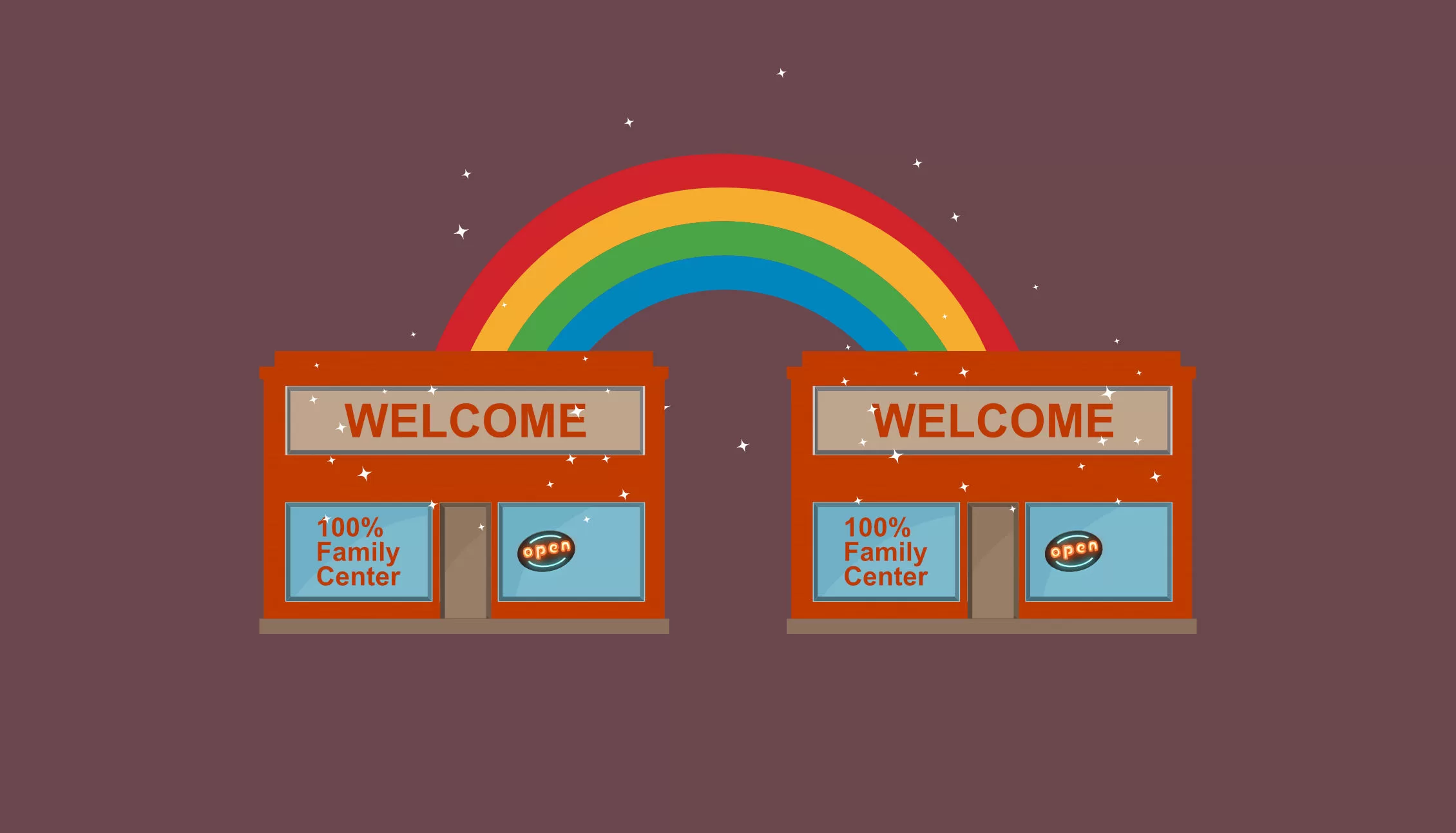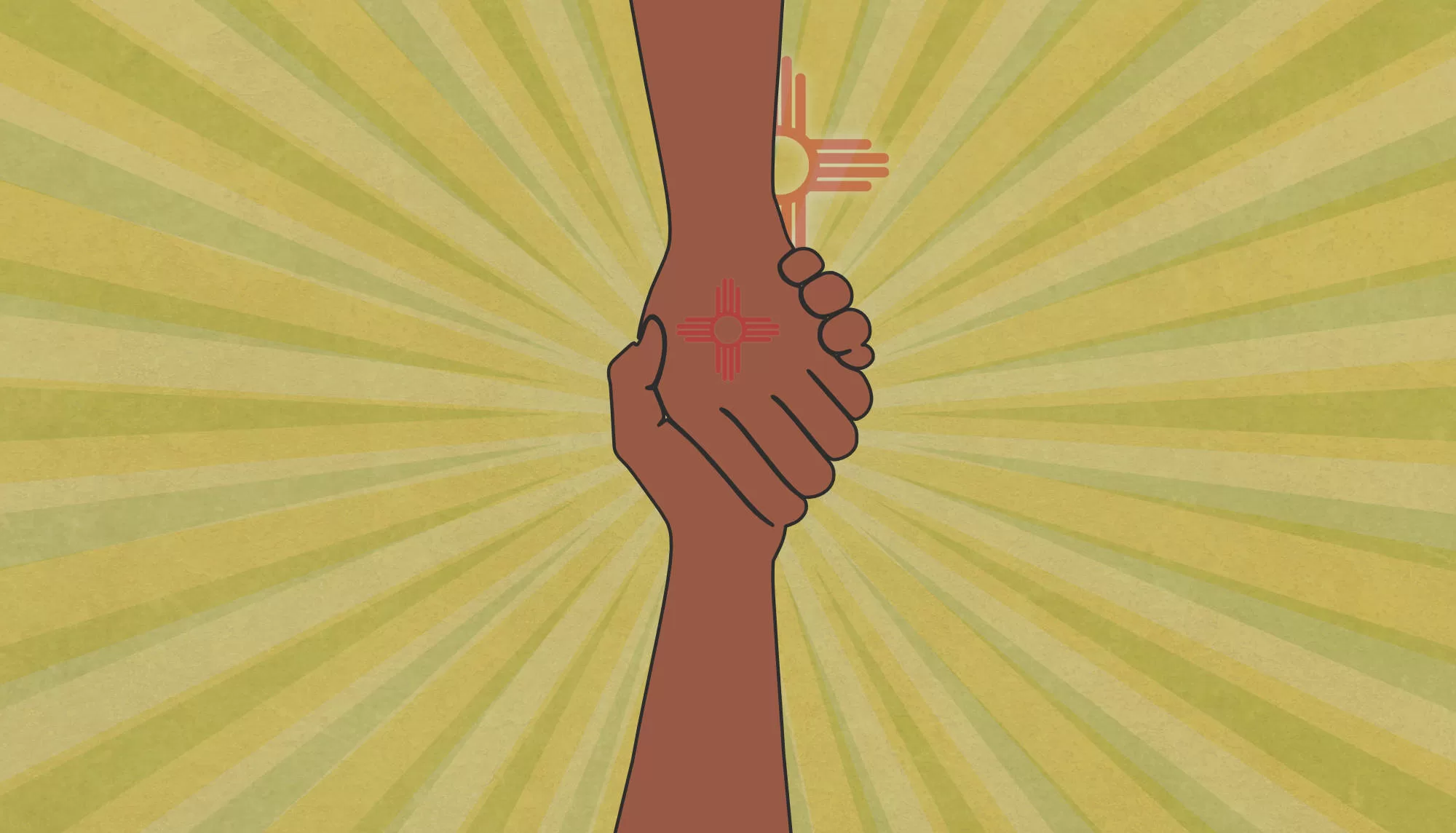7 Steps to Ensure Our Children Survive and Thrive
The 100% New Mexico initiative provides an ever-growing number of visionary and courageous county stakeholders with the seven steps to transform communities by ensuring access to vital services.
It’s a creative and iterative process
In the language of public health, we are transforming the adverse social determinants of health into positive ones. This turns under-resourced areas into fully-resourced communities where all families have access to vital services for surviving and thriving. What our 100% New Mexico initiative is doing statewide has never been done before in the US. With the resources of a university behind us, we are supporting each county across the state with the framework for strengthening ten service sectors including healthcare, education, housing, food, and transportation.
As we like to remind all our local 100% New Mexico initiative participants and their partners, the seven steps of the county-based initiative are not strictly linear. We have learned that each county has different capacities and ways of approaching large-scale collaborative projects like the local 100% Community initiative. That said, we have found that to have an effective data-driven process, steps 1, 2, and 3 should happen before step 5.
- Step 1: Survey Your County Residents
- Step 2: Review Survey Results and Barriers
- Step 3: Assess The Providers of Ten Surviving And Thriving Services
- Step 4: Ensure That A County Directory Of Ten Vital Services Exists
- Step 5: Identify Policies And Programs To Fix Service Barriers
- Step 6: Get Buy-In From Local Government And Stakeholders
- Step 7: Evaluate The Effectiveness Of Each Project

Step 1: Survey Your County Residents
Initiative teams implement the 100% Community County Survey that assesses residents’ access to 10 vital services for surviving and thriving and what barriers to reaching them exist. You’ll learn that different populations will have different challenges such as cost, applicants not qualifying for help, unfriendly hours (especially for working parents), lack of transportation, services located in areas too far to reach, uncertainty about where to get service, or problems with staff not speaking their language. For real-world examples, please review a sample of the 100% Community County Survey on our Barriers & Solutions page.
Step 2: Review Survey Results
Initiative teams review the 100% Community County Survey data to learn what percentage of county residents struggle to access vital services, what barriers to accessing services exist, and where they exist in the county. Each action team can review the data from the countywide survey, especially the barriers to accessing services. Each barrier (such as unfriendly hours, and lack of transport to services) will require analysis and a plan to address it.
This step is critical, as it guides the development of projects that address the barriers identified in the survey. All of us working in the public sector are used to having limited resources so we tend to think small and launch “doable” low-cost projects like workshops and websites. As we review barriers, we must think big, for example, creating new 100% Family Centers serving as one-stop service hubs.
Step 3: Assess the Ten Surviving and Thriving Services
Initiative teams, including ten action teams each focused on one sector such as food or medical care, are created to learn about the capacity of current services in all 10 surviving and thriving sectors. The goal is to understand the challenges service organizations face when meeting the needs of county residents.
The key questions in informational interviews with local organizations are, “What’s the capacity of your staff and providers to meet local needs?” and “What support might you need to address challenges like workforce shortages, lack of sustainable funding, or lack of technology to increase overall service delivery and provide both onsite and web-based services?”
This is a process called asset mapping, identifying the organizations that provide the ten services in a county (or region). In some counties, one person is hired to take this process on while in other counties, action teams divide up the work. Those doing the informational interviews will be collecting information in a document or spreadsheet (a Google Doc or Google Sheet works nicely) to create a list of potential collaborators as well as create an up-to-date directory of services. We stress that without this asset mapping project, it will be impossible for action teams to know why barriers exist within each sector. While some counties embrace the process, others struggle to achieve this step.
Step 4: Ensure That a County Directory of Ten Vital Services Exists
Next, assess the status of current online directories for family services, including all those for children, students, and youth. An online search of “Family Services Directory Santa Fe” should yield interesting results. A county may not lack a wealth of printed or web-based directories. Schools, child welfare, health councils, and local governments often create them on their own. The vital question is: How up-to-date is the information?
Each of the county’s ten action teams updates an existing online directory of services or creates a new updated 100% Family Services Directory guiding residents to the ten vital services. With a quick online search for each sector, such as “Behavioral Health Care Santa Fe,” private and public agencies will appear. We work to identify the services with a sliding fee scale so the barrier of cost does not exist for families. As with asset mapping in the previous phase, this work can be done by a contractor or divided up by action team members.
Note that directories will need local monitoring and updating based on changes in services due to disruptions caused by public health and economic challenges. We can provide you with a model web-based directory as well as assistance with creating an app to reach the widest audience.
Step 5: Identify Innovative Policies and Programs to Fix Barriers to Accessing Ten Services
We arrive at the heart of transforming adverse social determinants (lack of services) into positive health determinants (easy-to-access services in all ten sectors). To address the barriers identified in the countywide survey, initiative teams learn about innovations in all ten sectors that can increase access, user-friendliness, and quality of services. The book 100% Community offers a starting point for exploring many potential innovative strategies to reduce service gaps and strengthen a countywide support system. Online searches will be part of this process. Action Teams can review ongoing research and prioritize innovations. In this phase, action teams create project plans including meeting the need, evidence-informed solutions, staffing, budgets, and evaluation process.
Two of our keystone projects, the 100% Family Center: One Stop Service Hub and Community Schools, serving as one-stop service hubs for students and their families, can significantly increase access to all services in all ten sectors. These two evidence-informed projects can be the focus of a county initiative, engaging all ten action teams. We can provide you with proposals to review for the 100% Family Center, including advice on staffing for 100% Community project developers.
Step 6: Get Buy-In from Local Government and Stakeholders
In this step, we identify potential funding sources from state and local governments, as well as build relationships with local and state government lawmakers and leaders. Projects as large as the 100% Family Center: One Stop Service Hub or creating Community Schools with school-based health centers will require financial support.
We know that state and local governments do not lack funding for these projects, but they may not see them as a priority. The job of 100% Community initiative participants is to make every child and student the number one priority. Our groundbreaking work requires that city and county budgets include line items for transforming the adverse social determinants of health into positive ones.
At this point, we are also educating local stakeholders about the return on investment that comes with ensuring access to ten vital services. Let’s suppose we want a society where all residents are being raised in trauma-free environments and empowered to become healthy and self-sufficient. In that case, we must invest in services that determine the quality of their lives.
One component of this step is building public awareness among lawmakers and all residents. We have found that an effective approach is to start with our book clubs (reading the books Anna, Age Eight, David, Age 14, 100% Community, and our whimsical and illustrated Attack of the Three-Headed Hydras). Next, you can kick off one of our 100% Mural Projects that bring the art community into the initiative. Once public awareness begins to build, you can hold one of our 100% Summits and 100% Youth Summits. These provide an opportunity to bring elected leaders into the initiative to experience first-hand how their constituents are engaged in local capacity-building work.
Needless to say, with all this activity we consider this an action phase. Keep in mind that it requires project management and ongoing tracking of local innovative projects in ten sectors. We can provide you with support in engaging elected leaders and project development.
Step 7: Evaluate the Effectiveness of Each Innovation and Measure the Increase in Access to Ten Vital Services
Initiative teams assess the impact of innovative projects aimed at enhancing access to ten essential services for survival and well-being, gathering feedback from both residents and service providers. Action teams work to ensure that our local efforts on each innovative project are making significant progress in improving access to services, with the ultimate aim of enabling every family to thrive. It is in this phase we can do a quarterly assessment of activities within all ten action teams. A local initiative can track if projects are being developed, including the two keystone projects, the 100% Family Center: One Stop Service Hub and 100% Community School with school-based health centers.
Most of us working in the public sector are overworked and pulled in a thousand directions. It’s so easy to get distracted from our goals. Following social media or paying close attention to the news can leave us feeling discouraged or disempowered. One advantage of the 100% Community initiative is the gathering of like-minded, proactive change agents who offer support and foster collaboration. This is serious work. You are taking on one of the most important and groundbreaking initiatives in the nation. As local teams evaluate their progress, they can assess how supported initiative members feel and learn what can strengthen the process of being an innovator engaged in local transformation. We can provide you with the 100% Quarterly Update, to help track progress within each action team. We can also share research briefs that focus on the importance of the work and how evaluation teams capture progress across a county, region, and state.
County-by-county, we’re transforming the state
For those seeking to join our bold transformation, you can find your county’s 100% New Mexico initiative on our map. Join an existing county initiative or start one. You may also review our latest research brief, evaluating our work. For those wanting a more in-depth look into the initiative, you are welcome to enroll in our free self-guided course A Child’s Right to Survive and Thrive. We welcome those courageous New Mexicans who believe that every child should have access to the services for surviving and thriving.
Don’t miss a blog post! Get notified!
The 100% New Mexico initiative is a program of the Anna, Age Eight Institute at New Mexico State University, College of Agricultural, Consumer and Environmental Sciences, Cooperative Extension Service. Contact: annaageeight@nmsu.edu or visit annaageeight.nmsu.edu to learn more.




